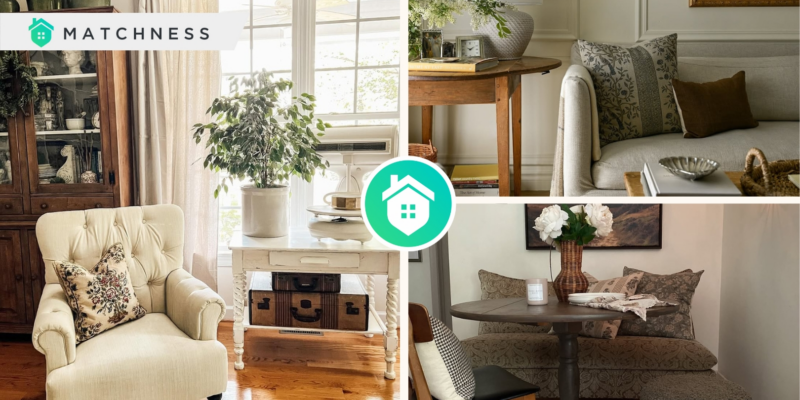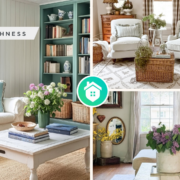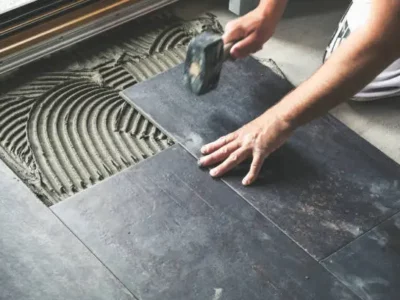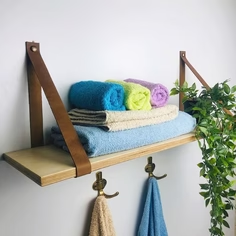In the ever-evolving world of interior design, one style continues to captivate many people and designers alike with its timeless allure—vintage home style. Far from being a fleeting trend, vintage design celebrates the beauty of the past. It blends nostalgia with elegance to create warm, inviting, and character-rich spaces. Whether it’s a quaint cottage filled with floral prints and antique furniture or a sophisticated apartment adorned with mid-century modern pieces, vintage style offers a unique opportunity to tell stories through design. This article explores the core elements, advantages, and ways to incorporate vintage aesthetics into modern homes. It provides both inspiration and practical guidance for those seeking to embrace this beloved design approach. Let’s check them out.

Understanding Vintage Style: A Blend of Eras
Vintage home style is often misunderstood as a single-era aesthetic, but in reality, it encompasses a range of influences spanning from the early 20th century to the late 1980s. This style is about more than just old furniture—it is about authenticity, craftsmanship, and a deep appreciation for history.
Key periods that influenced vintage style include:
- The 1920s–1930s: Known for Art Deco sophistication, this era brought geometric patterns, rich color palettes, and bold glamour.
- The 1940s–1950s: A post-war optimism led to cheerful, practical decor. Think floral wallpapers, retro appliances, and cozy textiles.
- The 1960s–1970s: Marked by experimentation, this period introduced bright colors, playful patterns, and an eclectic mix of materials.
Blending these eras thoughtfully is essential to avoid an overly thematic or chaotic appearance. A well-curated vintage home should feel harmonious and intentional, with each piece contributing to the overall narrative of the space.
The Appeal of Vintage Design
Vintage design’s enduring popularity can be attributed to several factors that go beyond aesthetics. At its core, vintage style evokes a sense of comfort, nostalgia, and individuality. In a world dominated by mass-produced furniture and fast-changing trends, vintage interiors offer a refreshing alternative.
- Character and Uniqueness: Vintage items often come with their own history, which adds depth and personality to a home. Each piece—be it a weathered trunk, a hand-painted armoire, or a retro lamp—has a story to tell.
- Sustainability: Reusing and repurposing vintage furniture is environmentally friendly. It minimizes waste and reduces the demand for new resources, making it a conscious choice for eco-minded homeowners.
- Craftsmanship: Many vintage items were built to last, crafted with superior materials and techniques that are often absent in modern mass production. Incorporating these pieces into your home lends a touch of enduring quality.
Elements of Vintage Style: What to Include
To create a vintage-inspired space, several design elements must come together in harmony:
Furniture
Opt for pieces with character—think clawfoot tables, tufted armchairs, or a French provincial dresser. Reupholstering old furniture with period-appropriate fabrics can breathe new life into cherished antiques.
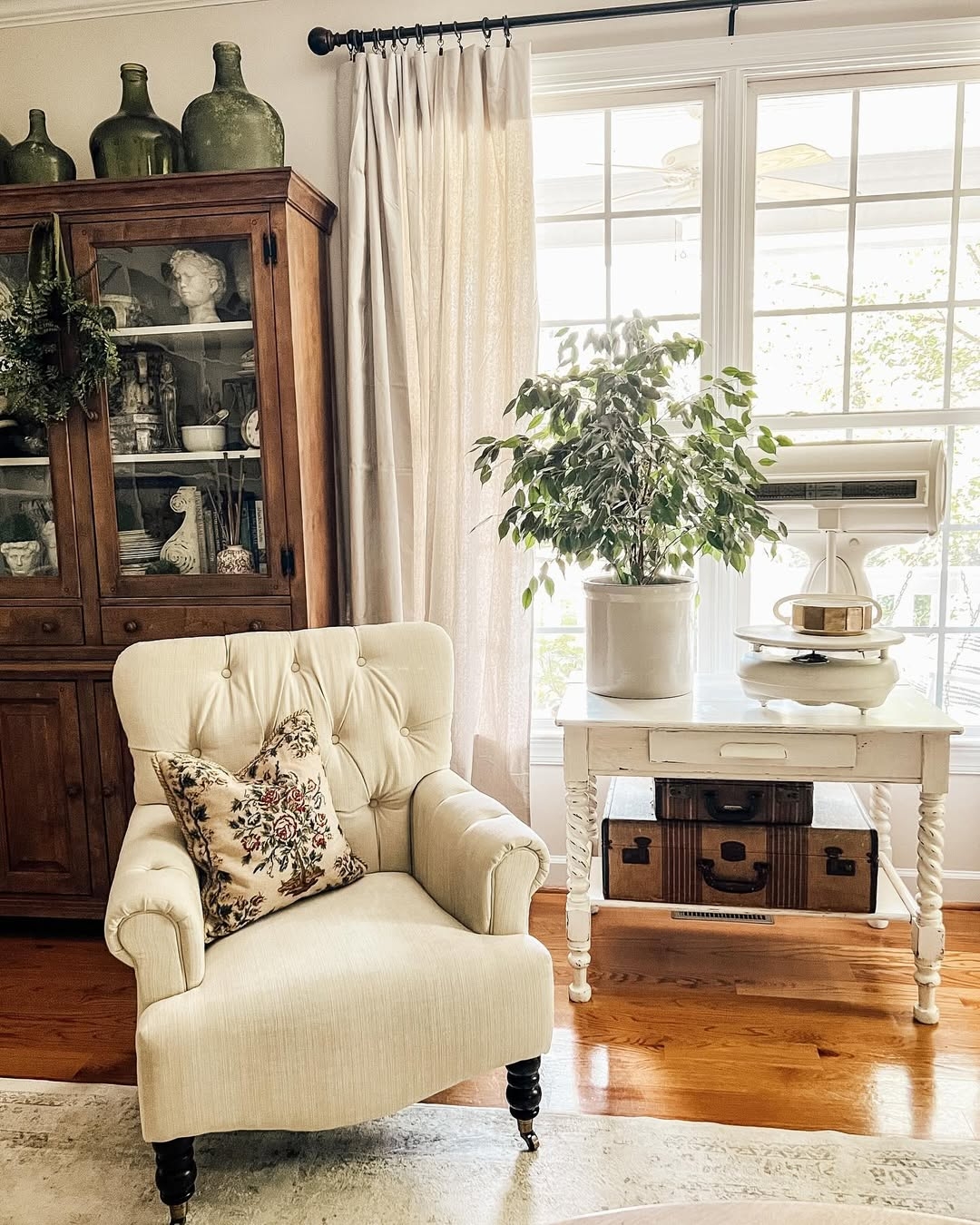
The tufted armchair and vintage table and cabinet are ideal for a bold vintage home style, adding character and charm to any room. It creates a cozy atmosphere. Vintage furniture from @linenandtwigs
Textiles
Soft furnishings such as lace curtains, embroidered cushions, ruffle accents, and patterned rugs enhance the cozy, lived-in feel that vintage homes are known for. Choose fabrics like linen, cotton, and velvet for an authentic touch.
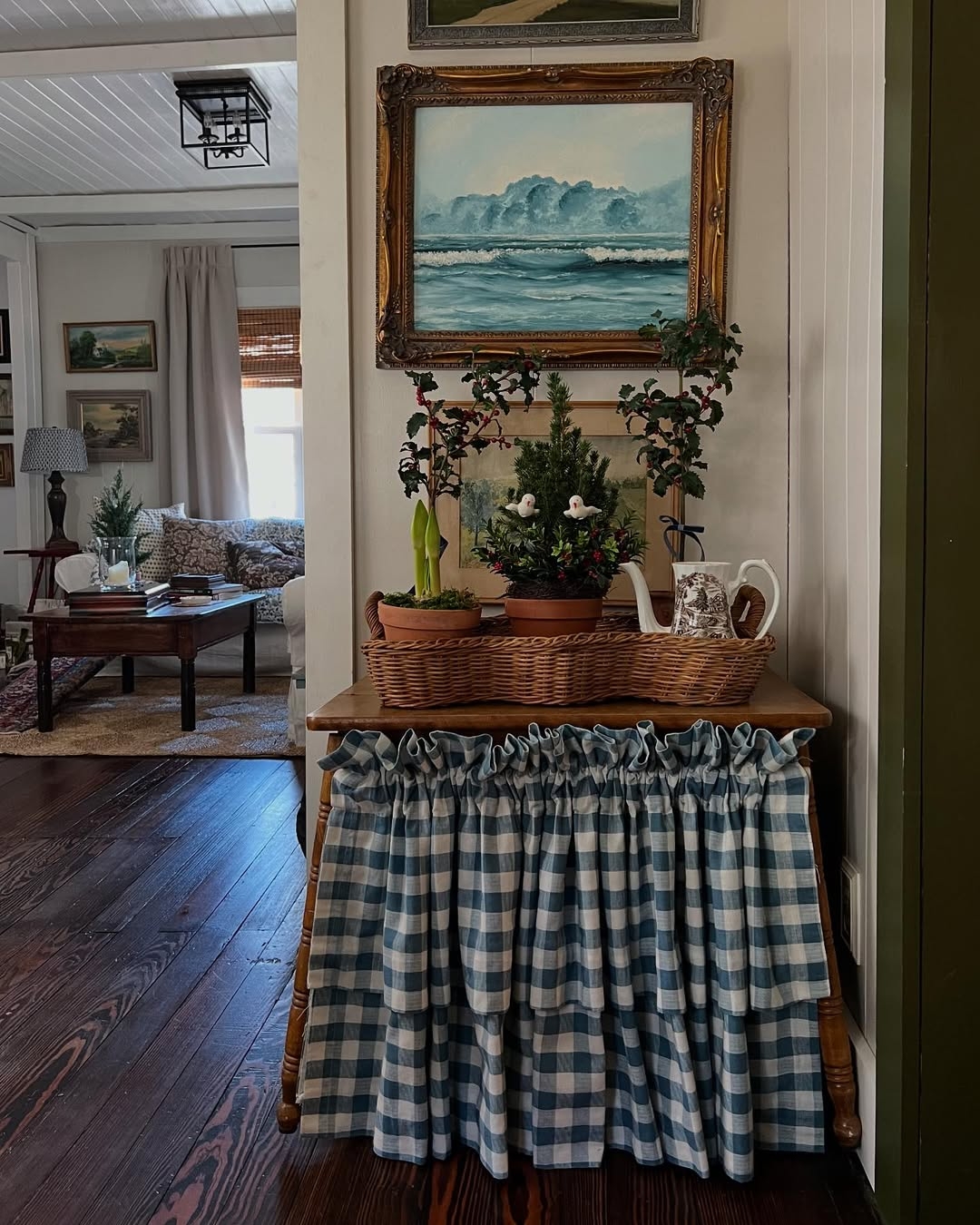
The ruffle accent on this table skirt adds a vintage touch. The blue and white checkered pattern gives it a charming and classic look that will complement any rustic or farmhouse decor. Ruffle accents from @number131
Colors and Patterns
Vintage palettes often include muted pastels, earthy tones, and jewel-like shades. Patterns—especially florals, paisleys, and damasks—play a crucial role in reinforcing the aesthetic.
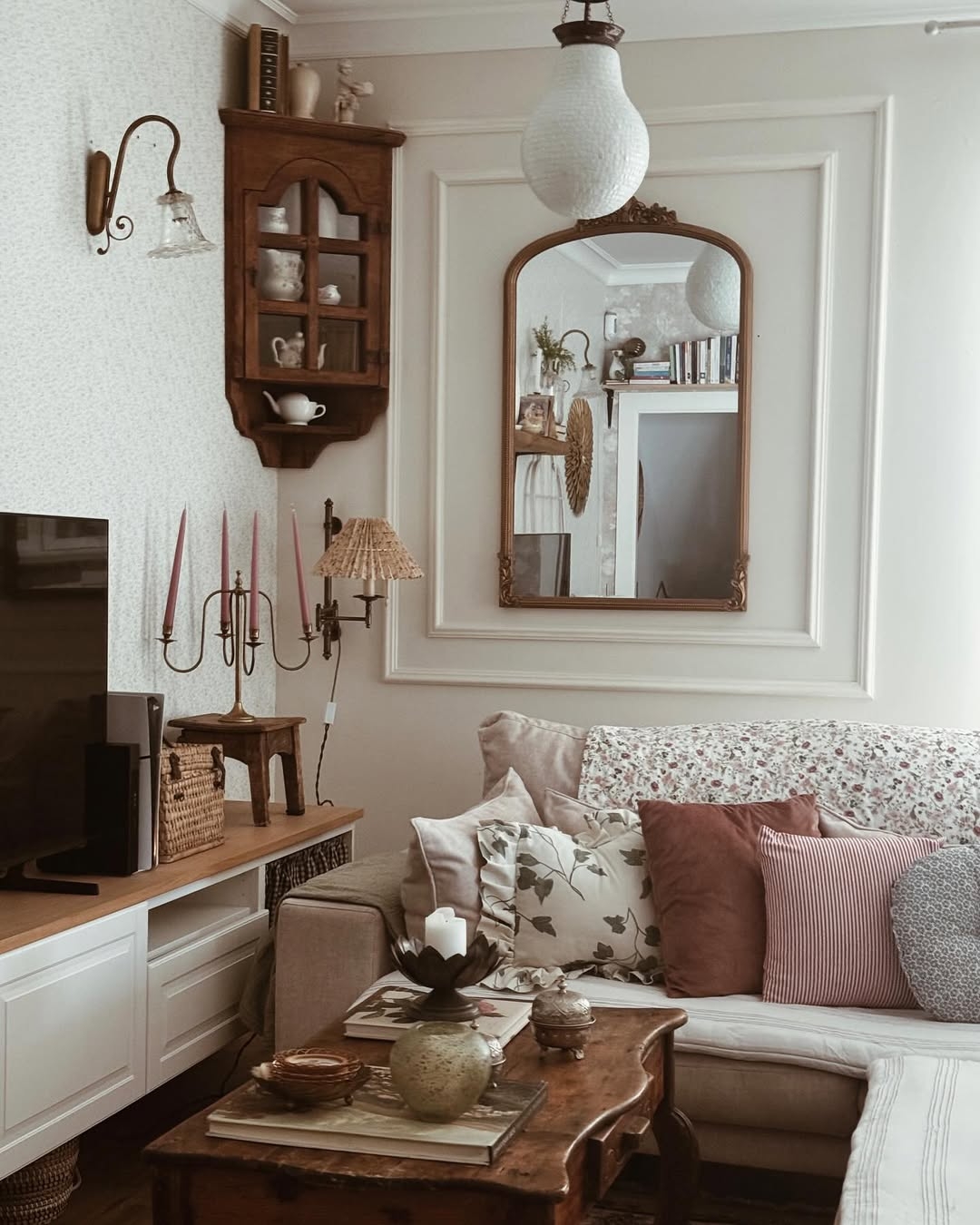
This vintage home, adorned with earthy colors and floral patterns, exudes warmth and nostalgia. The rich textures and intricate detail create a cozy and inviting atmosphere. Color and patterns from @decohobbie
Accessories
The right accessories can transform a room. Vintage mirrors, porcelain vases, crystal chandeliers, and old books contribute to the style’s charm. Don’t forget details like brass handles, ornate frames, and retro clocks.
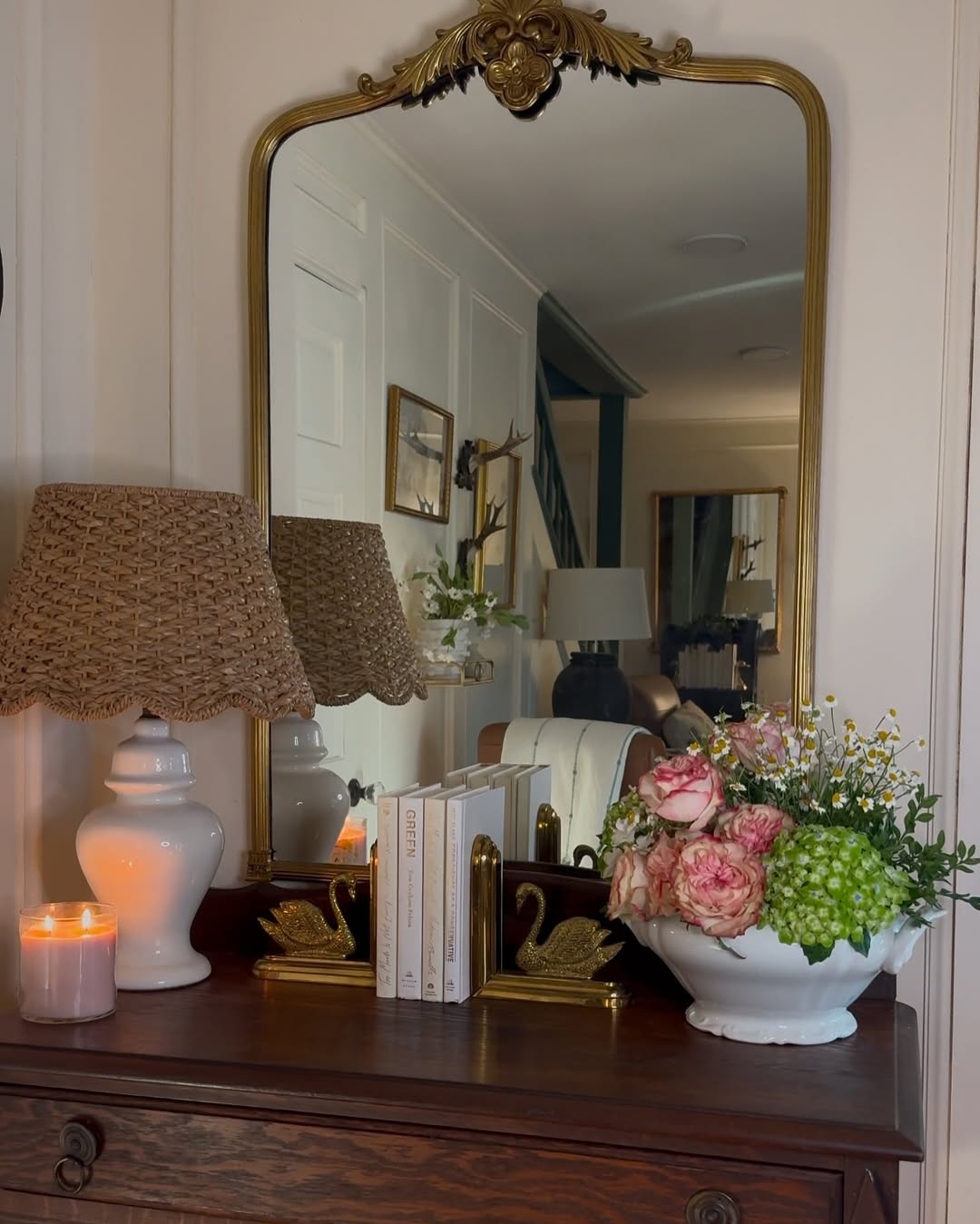
The vintage mirror’s brass accent adds elegance and sophistication to any room. It blends history and character with intricate detailing and craftsmanship. Vintage mirror from @ruefer.heartandhome
Artwork and Wall Decor
Framed botanical prints, black-and-white photographs, and antique maps are ideal wall art choices. Gallery walls mixing various frame styles can give a room a collected-over-time look. Or, you can install floral wallpaper to strengthen the vintage feel.
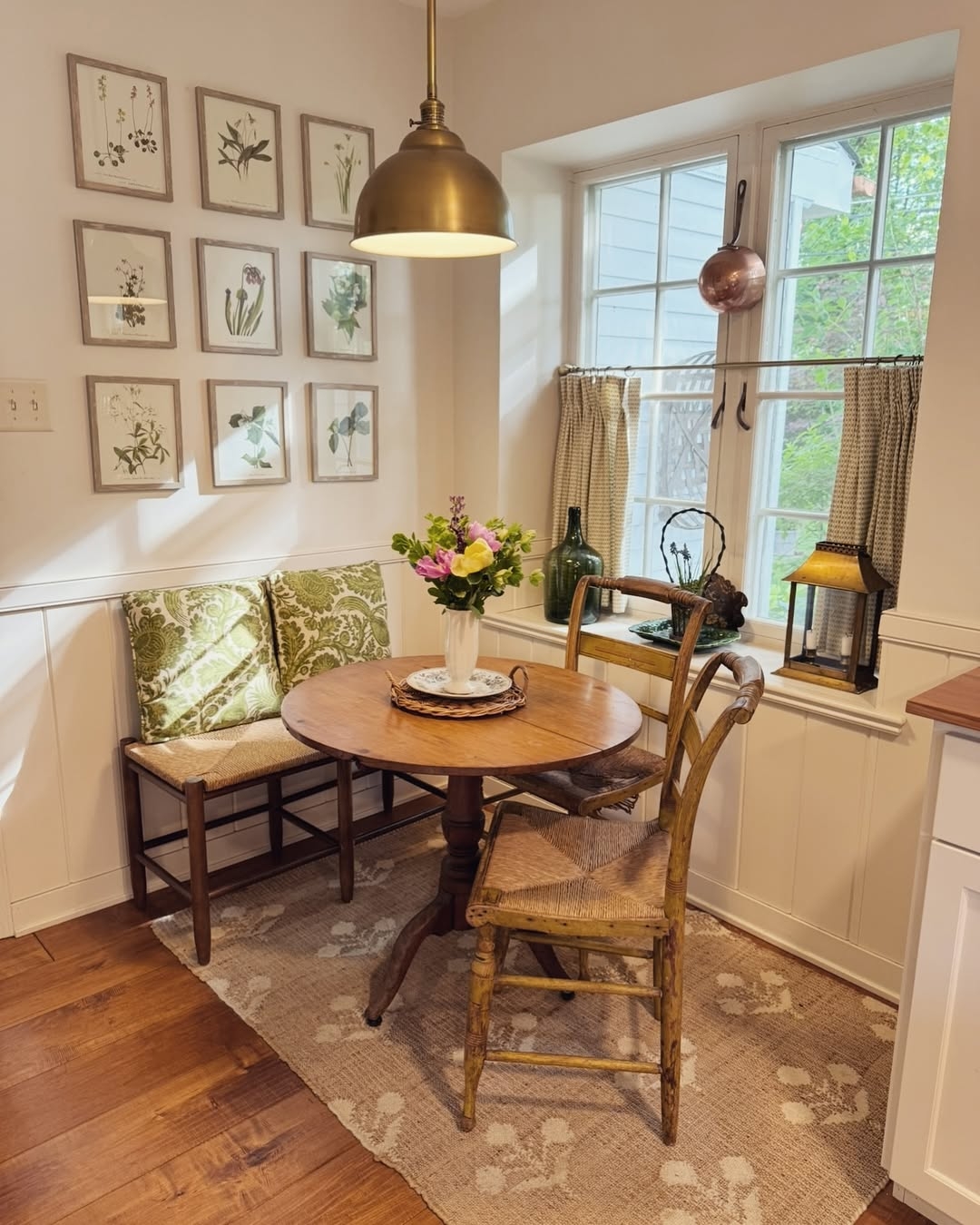
Adding framed botanical prints to this vintage dining room decor will bring a touch of nature and elegance to the space. The prints can also tie in with the room’s color scheme and add visual interest to the walls. Framed botanical prints from @stonecottage2250
Incorporating Vintage Style in a Modern Home
Bringing vintage charm into a modern home requires a delicate balance. The goal is to enhance, not overwhelm. Here are some strategies for integrating vintage style seamlessly:
Start Small
Begin with one or two vintage focal points, such as a dining table, a side table, a coffee table, or a statement armchair. Build around these items gradually.

Even just placing a vintage side table next to the modern sofa can instantly add character and charm to the room. The side table blends well with the contemporary elements in the space. Vintage side table from @megangieber
Mix and Match
Combine vintage pieces with contemporary elements to prevent your space from feeling like a museum. A sleek modern sofa can be paired with a vintage coffee table, a vintage dresser, or a patterned rug for contrast.
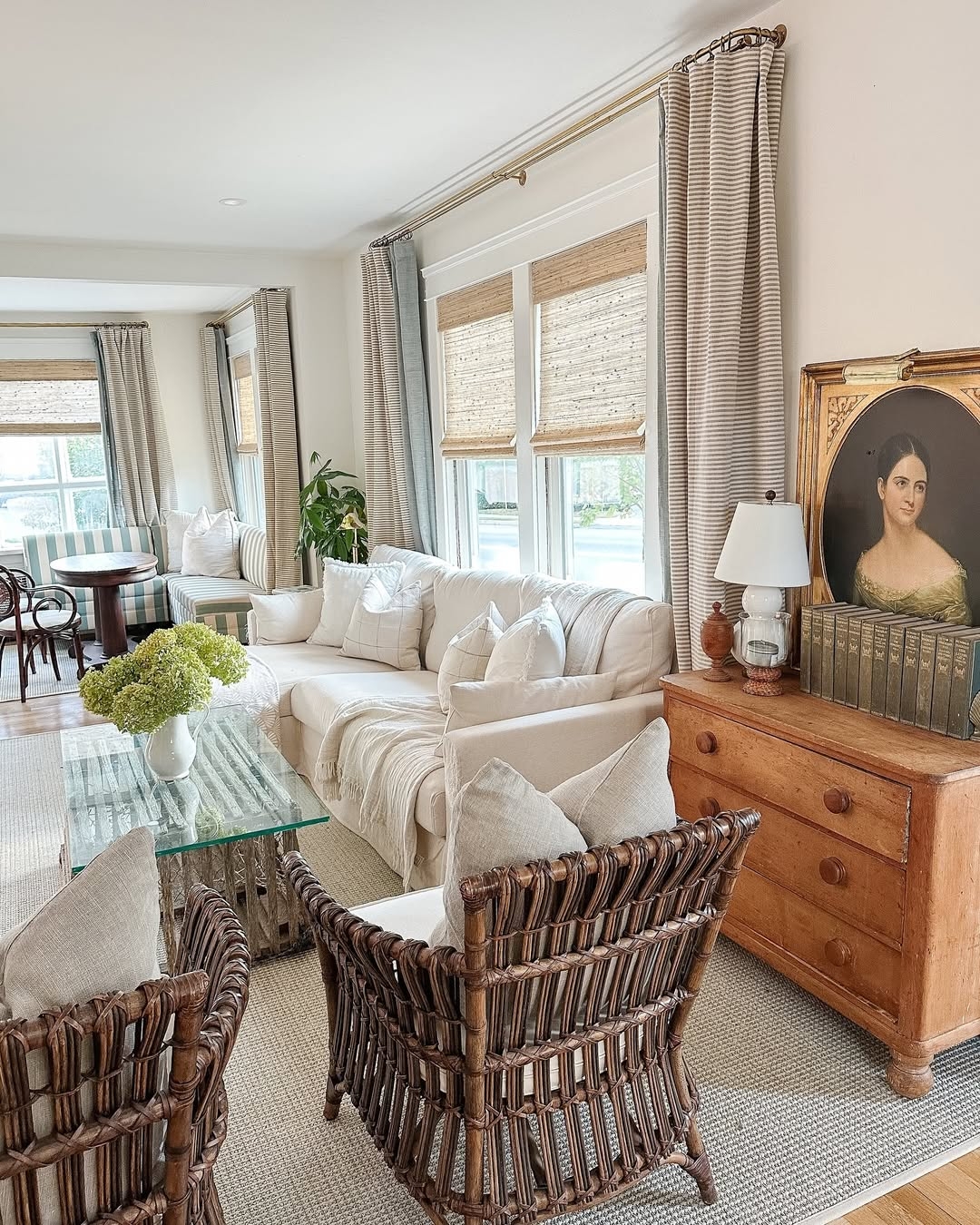
The mix of a vintage dresser, a modern sofa, and a glass-top coffee table creates a unique and eclectic aesthetic in the living room. The combination of different styles adds character and visual interest to the space. Modern and vintage styles from @homeonbroad
Repurpose with Creativity
Turn a vintage trunk into a coffee table or use old crates as shelves. These creative touches not only add visual interest but also increase functionality.
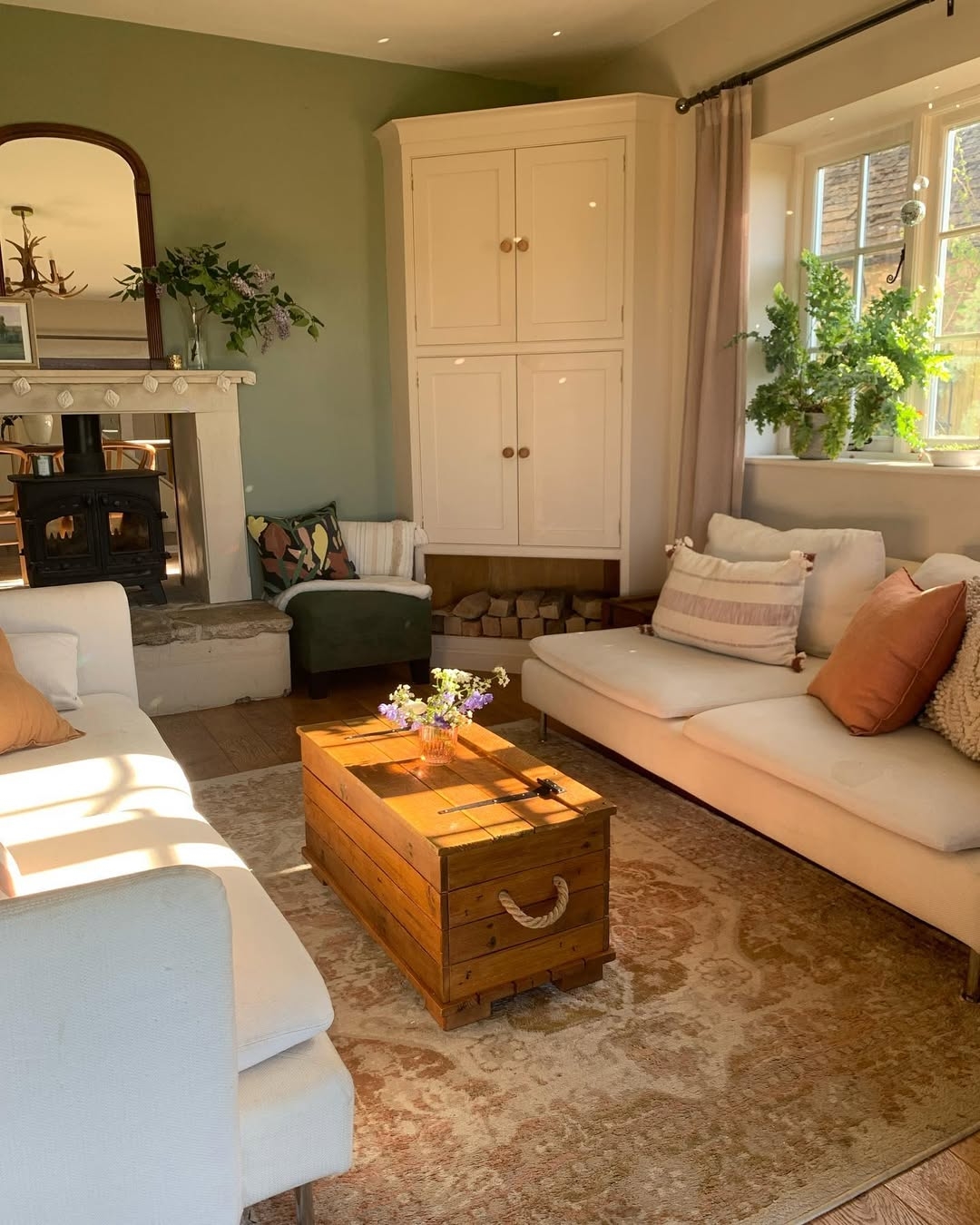
The trunk coffee table adds a touch of elegance and vintage to the living room. Its sleek design and ample storage space make it both stylish and functional. Trunk coffee table from @what_a_view_cottage
Focus on Quality
Invest in pieces that are well-made and timeless. Quality trumps quantity when it comes to vintage decor. For example, consider adding a mid-century modern sofa, a retro-inspired light fixture, or a vintage teak table to bring character and charm to your space. These statement pieces will stand the test of time and elevate the overall aesthetic of your home.
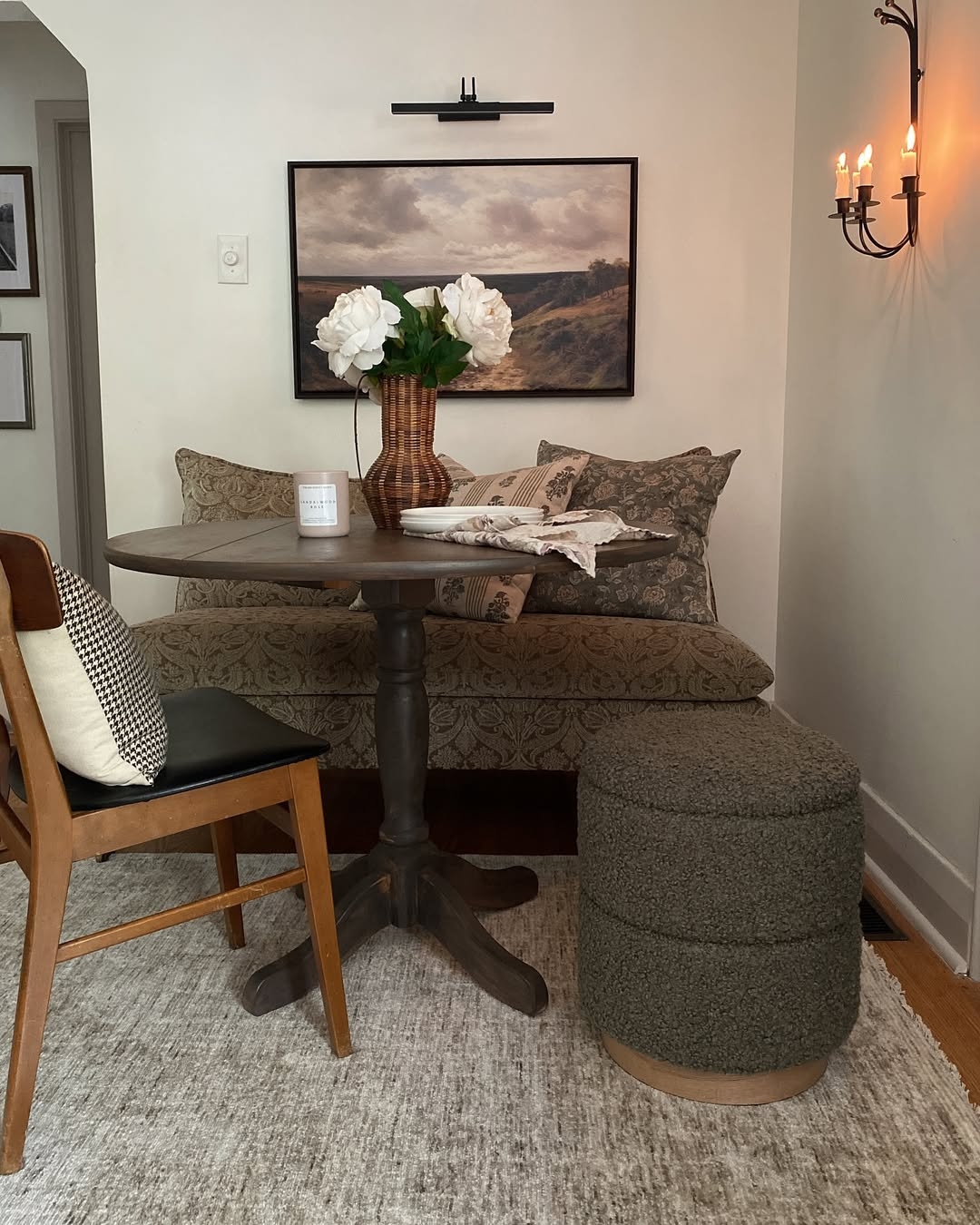
A clawfoot dining table provides durability and classic elegance to any dining room. The sturdy construction and timeless design make it a versatile piece that can be passed down for generations. Clawfoot dining table from @lexstyleanddesign
Maintain a Cohesive Palette
While vintage style embraces variety, a consistent color scheme can tie the look together and prevent visual clutter.
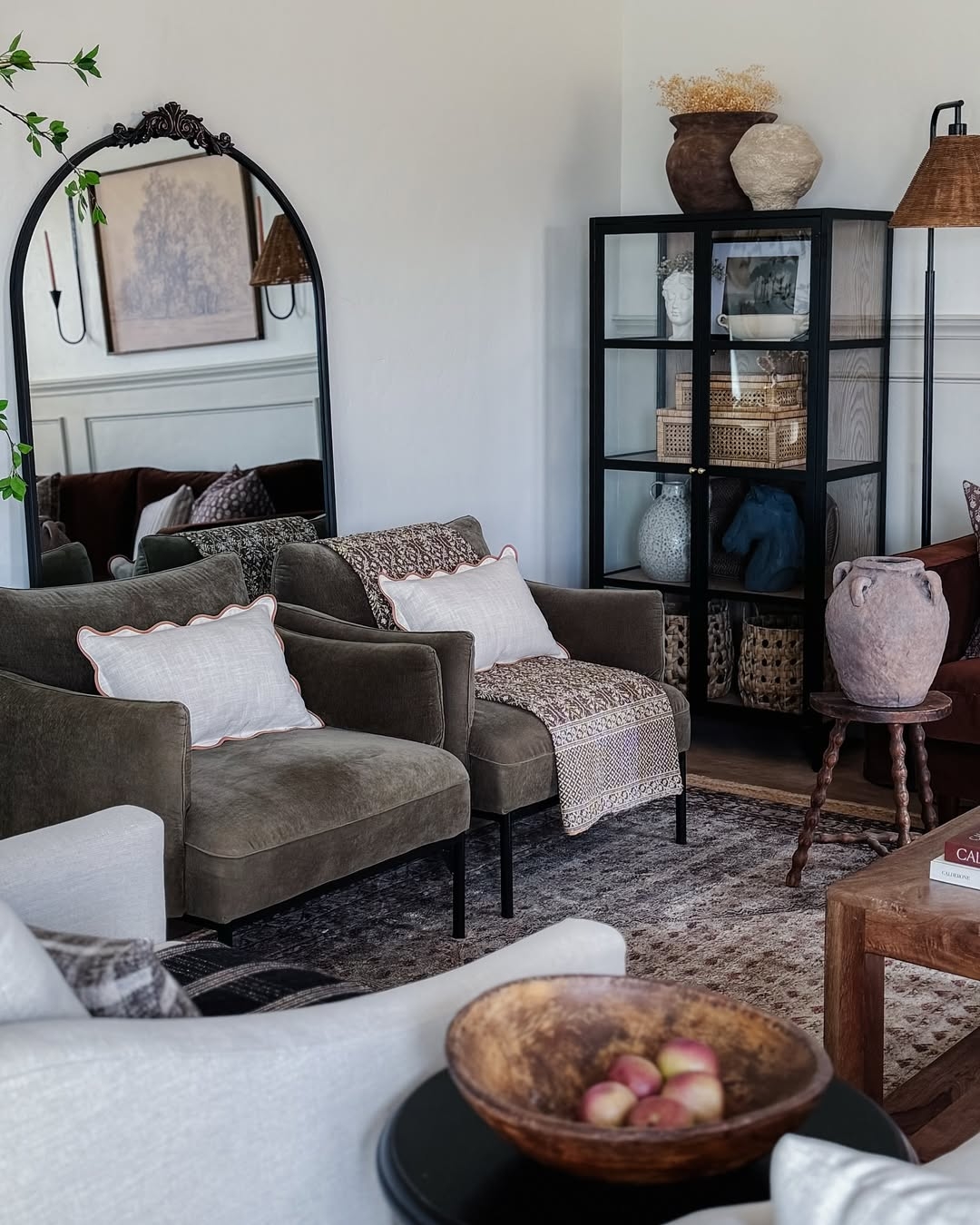
The living room, a blend of modern and vintage accents, exudes a cohesive aesthetic with neutral colors and natural textures. The pops of color from the accent pieces add visual interest without overwhelming the space. Cohesive palette from @theresachristinehome
Final Thoughts: Vintage as a Personal Expression
Perhaps the most compelling aspect of vintage home style is its ability to reflect the personal tastes and histories of its inhabitants. Unlike minimalist or ultra-modern aesthetics, which can sometimes feel sterile or impersonal, vintage design celebrates individuality. It invites homeowners to be curators of their own space, blending memories, heirlooms, and discoveries from flea markets or antique shops into a living tapestry of comfort and style.
As we continue to navigate a world of rapid change and constant innovation, the charm of vintage interiors reminds us of the value of heritage, sustainability, and beauty that transcends time. Whether you’re revamping a single room or undertaking a full-scale redesign, incorporating vintage elements can breathe life and soul into your home—creating a sanctuary that feels truly timeless.


